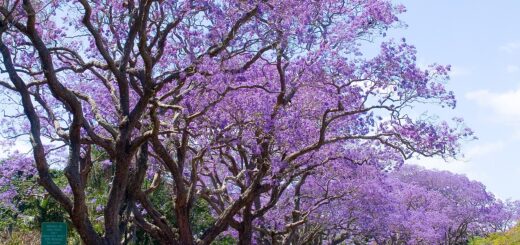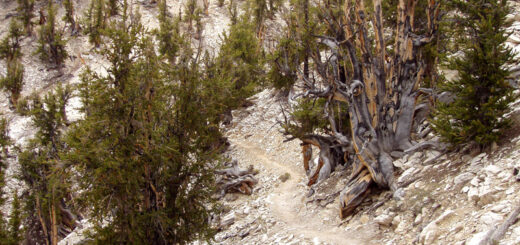American Beech Tree – A Quiet Giant of the Eastern Forest
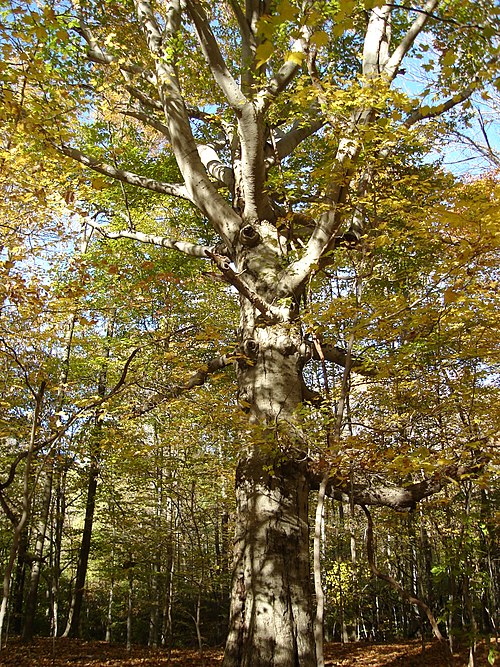
If you’ve ever wandered through an Eastern North American forest and noticed a smooth, gray-barked tree standing with quiet dignity among its neighbors, chances are you met the American Beech (Fagus grandifolia). Revered for its beauty, ecological value, and resilience, this majestic tree is a cornerstone species in deciduous woodlands stretching from Canada to the Gulf of Mexico.
A Snapshot of the American Beech
The American Beech is a deciduous hardwood that can live for over 240 years and grow up to 120 feet tall under the right conditions. Its most distinctive feature is its silvery-gray bark, which stays smooth even as the tree ages. In fact, this bark is so striking and uniform that it’s often (regrettably) used by lovers as nature’s notebook, initials carved into the trunk can scar the tree for life.
Its leaves are dark green, oval-shaped with serrated edges, and turn a gorgeous bronze-gold in the fall. One charming habit of the beech tree is its tendency to hold onto its dried leaves through winter, especially on younger trees — giving a touch of warmth and sound to an otherwise quiet season.
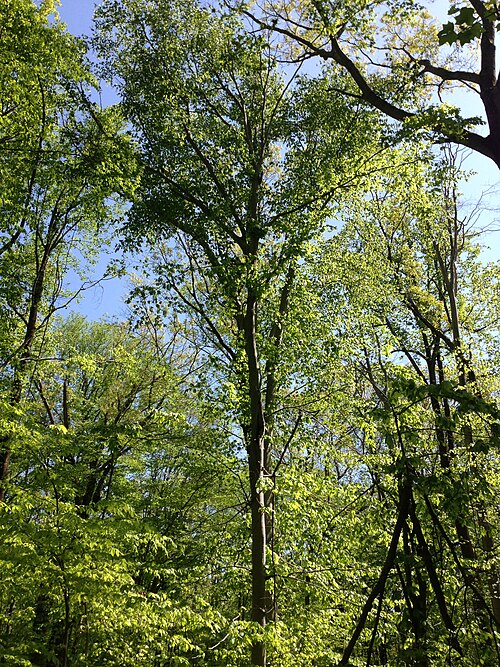
View of a large American Beech tree from the Old Forge Trail in Clayton Park, Upper Freehold Township, New Jersey – Creative Commons | Author: Famartin – Source: https://commons.wikimedia.org/wiki/File:2014-05-11_10_37_00_View_of_a_large_American_Beech_tree_from_the_Old_Forge_Trail_in_Clayton_Park,_Upper_Freehold_Township,_New_Jersey.JPG
Ecological Importance
The American Beech plays a vital role in forest ecosystems. Its nuts, known as beechnuts, are a rich food source for a variety of wildlife, including squirrels, bears, deer, chipmunks, and birds. These nuts are small and encased in a spiny husk, typically produced in mast years (when trees synchronize their nut production).
Because it grows slowly and thrives in shade, American Beech often becomes a climax species in undisturbed forests, outliving faster-growing trees like birch or maple. Its deep root system and dense canopy help prevent erosion and contribute to the forest’s natural succession and structure.
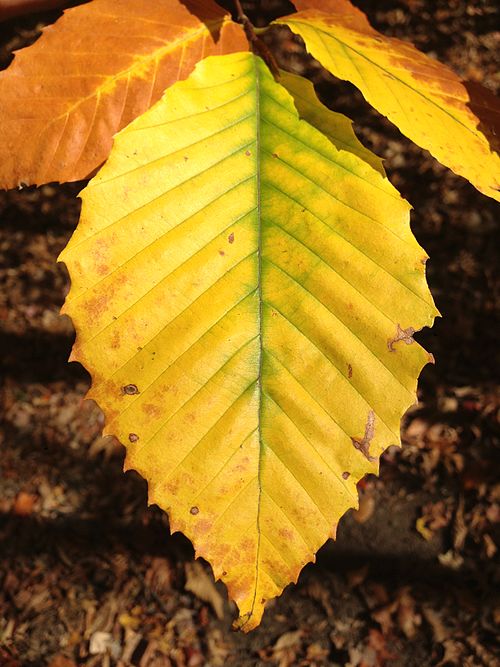
American Beech foliage during autumn in the woodlands along the West Branch Shabakunk Creek in Ewing, New Jersey – Creative Commons | Author: Famartin – Source: https://commons.wikimedia.org/wiki/File:2014-10-30_13_24_34_American_Beech_foliage_during_autumn_in_the_woodlands_along_the_West_Branch_Shabakunk_Creek_in_Ewing,_New_Jersey.JPG
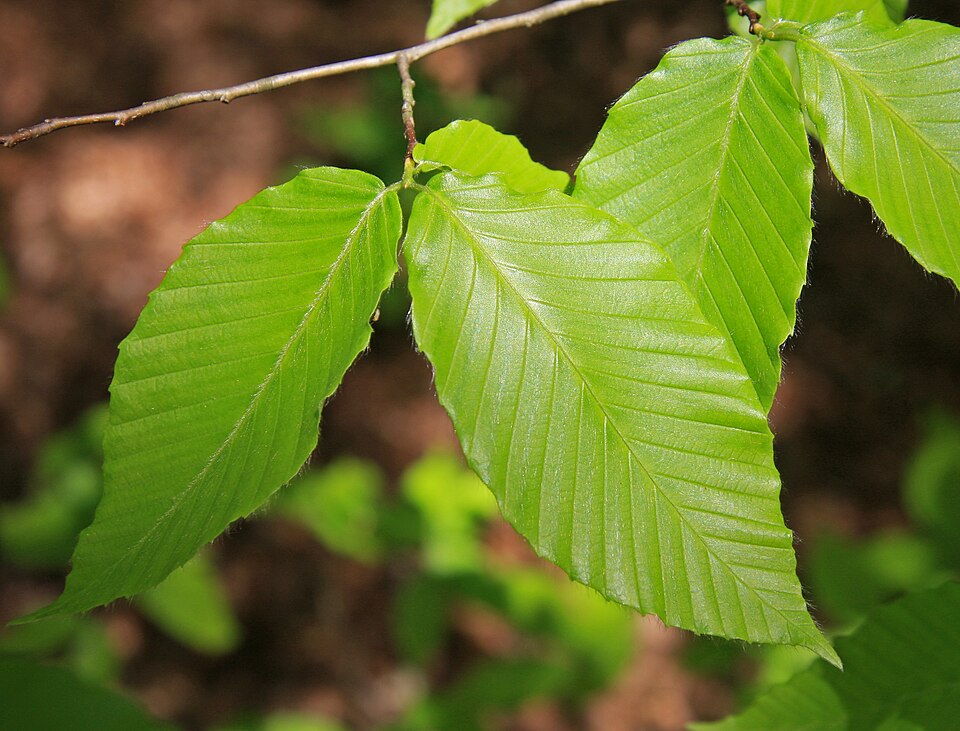
American beech (Fagus grandifolia), closeup of spring leaves. Duke Forest Korstian Division, Durham, North Carolina USA – Creative Commons | Author: Dcrjsr – Source: https://commons.wikimedia.org/wiki/File:Fagus_grandifolia_beech_leaves_close.jpg
Challenges and Threats
Sadly, the American Beech is under threat from a devastating disease known as Beech Bark Disease. This condition results from a one-two punch: a non-native scale insect weakens the bark, allowing a fungus (Nectria) to invade and kill the tree. Since the early 20th century, this disease has spread widely, changing the makeup of beech-dominant forests.
Climate change and habitat fragmentation are additional threats, potentially limiting the tree’s ability to regenerate naturally.

American beech branch showing marcescent leaves in winter. Creative Commons | Author: Gorillo.Chimpo – Source: https://commons.wikimedia.org/wiki/File:Fagus_grandifolia_in_winter.jpg
American in Culture and History
Historically, the American Beech has been valued not only for its wood, used in flooring, furniture, and tool handles, but also for its symbolism. In Celtic tradition, beech trees represented wisdom and knowledge, and some scholars believe the word “book” may be derived from an old word for “beech.”
For early American settlers, beech groves were signs of fertile soil and good land for farming. Today, they remain favorite spots for hikers, nature lovers, and those who simply want to sit beneath a broad canopy and take in the forest.
Planting and Preservation
If you’re considering planting a beech tree in your yard or community, you’re choosing a legacy tree. They require space, patience, and a bit of planning, they don’t like to be transplanted and do best in well-drained, rich soil. But the reward is a tree that will outlast generations, provide wildlife habitat, and offer beauty through every season.
The American Beech isn’t loud or flashy, but it holds a quiet power in the landscape, a tree of longevity, grace, and strength. Whether you’re walking a trail in autumn or reading a book under its summer canopy, the beech offers a gentle reminder of nature’s enduring elegance.
References:
https://en.wikipedia.org/wiki/Fagus_grandifolia

